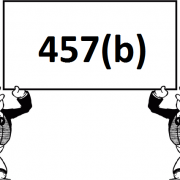 Print Friendly Version
Print Friendly Version
Sham termination of employment and distributions
“What are the rules regarding firing an employee, allowing the individual to take a distribution from his 401(k) account and then rehiring the same individual? Is it a valid distribution? If not, is the plan in jeopardy of processing an impermissible withdrawal?”
ERISA consultants at the Retirement Learning Center Resource Desk regularly receive calls from financial advisors on a broad array of technical topics related to IRAs, qualified retirement plans and other types of retirement savings and income plans, including nonqualified plans, Social Security and Medicare. We bring Case of the Week to you to highlight the most relevant topics affecting your business. A recent call with a financial advisor from West Virginia is representative of a common inquiry related to severance of employment and distributions.
Highlights of the Discussion
The IRS could view the firing and re-hiring of an employee who has taken a distribution of plan assets due to separation of service or severance of employment[1] as either a “sham” or a “bona fide” termination depending on the facts and circumstances. Qualified retirement plan assets, typically, are not distributable until the participant incurs a distribution triggering event as outlined in the governing plan document, for example, separation of service or severance of employment (see pages 196-197 from the pdf for Revenue Ruling 56-214). In the case of a sham termination, the processing of an impermissible distribution without a legitimate distribution triggering event is an operational failure that, potentially, could put the plan at risk of disqualification, resulting in possible adverse tax consequences to the participant and the employer (see Private Letter Ruling 2000-0245).
There is no definitive rule prohibiting the rehiring of an employee who has received a plan distribution as a result of leaving employment. For example, at least one court ruled that a participant had a true termination, even though he returned to employment with his former employer five months after he retired, because at the time of his retirement he had no intention of returning to work and was only able to return to employment following an unforeseen change in circumstances (see Barrus v. United States, 23 AFTR 2d 990 (DC NC 1969)). And in Revenue Ruling 69-647 (see pages 100-101 of Internal Revenue Cumulative Bulletin 69[2] , the IRS ruled that a senior executive who retired from full-time employment and continued to render services to the same company, but on a part-time basis as an independent contractor, was considered to have terminated employment.
However, if the IRS determines the termination is a ruse merely to facilitate a distribution not otherwise available, and both the plan sponsor and participant know in advance that the fired individual will be rehired, the IRS may view such action as a sham termination. The IRS specifically “does not endorse a prearranged termination and rehire as constituting a full retirement” (see the preamble to REG-114726-04 ).
The basic rule is that, to receive a distribution from a 401(k) plan on account of a severance of employment, the participant must have experienced a bona fide termination of employment in which the employer/employee relationship is completely severed.
Facts and circumstances the IRS will consider include the following:
- Did the plan sponsor follow the terms of the plan document? (Allowing a distribution as a result of a sham termination would constitute a failure to follow the terms of the plan document because plan assets were distributable in a situation not provided for under the terms of the plan).
- Did the termination of employment and processing of the distribution follow all the established administrative procedures?
- How long was the time interval between termination and rehire?
- What documentation exists to substantiate the termination and distribution?
- Did the alleged sham termination involve a highly compensated employee?
Conclusion
A plan sponsor and participant(s) who collude to stage a firing/re-hiring scenario to facilitate a qualified plan distribution are potentially putting the qualified status of the plan at risk. Under investigation, the IRS could determine the termination is a sham and impose sanctions.
Any information provided is for informational purposes only. It cannot be used for the purposes of avoiding penalties and taxes. Consumers should consult with their tax advisor or attorney regarding their specific situation.
[1] Prior to January 1, 2002, most plans used the term “separation from service” rather than “severance of employment.” Separation of service carried the “same desk rule,” which prevented many 401(k) plans from making distributions to former employees who continued working at the same job but for a different employer as the result of a merger, acquisition or similar transaction. The Economic Growth and Tax Relief Reconciliation Act of 2001 allowed plan sponsors to replace the separation from service/same desk requirement to allow for distribution upon a participant’s severance from employment with the employer sponsoring the plan.











